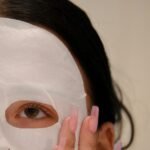Age spots, also known as liver spots or solar lentigines, are flat, brown, or black spots that typically appear on sun-exposed areas of the skin, such as the face, hands, shoulders, and arms. These spots are a common sign of aging and are often associated with prolonged sun exposure over the years. While they are generally harmless and do not require medical treatment, many individuals seek to reduce their appearance for cosmetic reasons.
Age spots can vary in size and may develop in clusters, leading to uneven skin tone that can affect one’s self-esteem. Fine lines, on the other hand, are subtle creases that form on the skin’s surface, often becoming more pronounced with age. They are most commonly found around the eyes, mouth, and forehead.
The development of fine lines is a natural part of the aging process, influenced by factors such as decreased collagen production, loss of skin elasticity, and environmental stressors. Unlike age spots, which are primarily a pigmentation issue, fine lines are indicative of the skin’s structural changes over time. Both age spots and fine lines can serve as reminders of a person’s life experiences but can also prompt individuals to seek out effective treatments to restore a more youthful appearance.
Key Takeaways
- Age spots and fine lines are common signs of aging that appear on the skin.
- Sun exposure, genetics, and aging are the main causes and risk factors for age spots and fine lines.
- Targeted treatments are important for effectively addressing age spots and fine lines.
- Topical treatments, such as creams and serums, can help reduce the appearance of age spots.
- Laser treatments, chemical peels, microdermabrasion, and injectable treatments are effective options for addressing age spots and fine lines.
Causes and Risk Factors
Who is Most Susceptible to Age Spots?
Individuals with fair skin are particularly susceptible to developing these spots due to lower levels of melanin, which provides some natural protection against UV damage. Additionally, age spots can also be exacerbated by artificial sources of UV light, such as tanning beds.
Risk Factors for Age Spots and Fine Lines
Several risk factors contribute to the likelihood of developing both age spots and fine lines. Genetics play a significant role; individuals with a family history of skin pigmentation issues may be more prone to age spots. Furthermore, lifestyle choices such as smoking and poor diet can accelerate skin aging and contribute to the formation of fine lines. Environmental factors like pollution and exposure to harsh chemicals can also damage the skin over time.
Prevention and Treatment of Age Spots and Fine Lines
Understanding these causes and risk factors is crucial for individuals seeking to prevent or treat age spots and fine lines effectively.
Importance of Targeted Treatments

Targeted treatments for age spots and fine lines are essential for those looking to improve their skin’s appearance and overall health. These treatments not only address cosmetic concerns but also promote skin rejuvenation and enhance self-confidence. By focusing on specific issues such as pigmentation irregularities or the loss of elasticity, targeted treatments can yield more effective results than general skincare routines.
For instance, while a moisturizer may hydrate the skin, it may not specifically address the underlying causes of age spots or fine lines. Moreover, targeted treatments can help prevent further skin damage. For example, using products with sun protection factor (SPF) can shield the skin from harmful UV rays that contribute to the formation of new age spots.
Similarly, incorporating antioxidants into one’s skincare regimen can combat oxidative stress caused by environmental factors, thereby reducing the risk of premature aging. By understanding the importance of targeted treatments, individuals can make informed decisions about their skincare routines and choose options that align with their specific needs.
Topical Treatments for Age Spots
Topical treatments for age spots often include ingredients that promote exfoliation and skin renewal. Hydroquinone is one of the most commonly used agents; it works by inhibiting melanin production in the skin.
However, it is essential to use this treatment under the guidance of a dermatologist due to potential side effects such as irritation or allergic reactions. Another effective topical treatment is retinoids, which are derivatives of vitamin Retinoids accelerate cell turnover and promote the shedding of dead skin cells while stimulating collagen production. This dual action not only helps fade existing age spots but also improves overall skin texture and reduces the appearance of fine lines.
Additionally, products containing alpha hydroxy acids (AHAs) or beta hydroxy acids (BHAs) can enhance exfoliation and promote a more even skin tone by sloughing off pigmented cells from the surface.
Laser Treatments for Age Spots
Laser treatments have gained popularity as a non-invasive option for addressing age spots effectively.
This precision allows for significant reduction in pigmentation with minimal downtime.
Patients often notice improvements after just one session; however, multiple treatments may be necessary for optimal results. Another laser option is fractional laser therapy, which works by creating micro-injuries in the skin to stimulate collagen production while simultaneously targeting pigmented areas. This method not only helps reduce age spots but also improves overall skin texture and tone.
Patients typically experience some redness and swelling post-treatment, but these effects usually subside within a few days. Laser treatments are particularly appealing for those seeking quick results with minimal recovery time.
Chemical Peels for Age Spots

Chemical peels are another effective treatment modality for age spots, utilizing various acids to exfoliate the outer layers of skin and promote cell turnover. Superficial peels often use glycolic acid or salicylic acid to gently remove dead skin cells and lighten pigmentation without significant downtime. These peels can be performed in a dermatologist’s office or at home with over-the-counter products designed for at-home use.
For more pronounced age spots, medium-depth peels using trichloroacetic acid (TCA) may be recommended. These peels penetrate deeper into the skin and provide more dramatic results but require a longer recovery period due to potential peeling and redness following treatment. Chemical peels not only target existing pigmentation but also stimulate collagen production, leading to improved skin texture and reduced fine lines over time.
Topical Treatments for Fine Lines
Topical treatments specifically designed for fine lines often focus on hydration and collagen stimulation. Hyaluronic acid is a popular ingredient known for its ability to retain moisture in the skin, plumping it up and reducing the appearance of fine lines. Many serums and creams contain this powerful humectant to provide immediate hydration while promoting long-term skin health.
Peptides are another key ingredient in topical treatments aimed at fine lines. These small chains of amino acids signal the skin to produce more collagen and elastin, essential proteins that maintain skin structure and elasticity. Products containing peptides can help improve skin firmness and reduce the visibility of fine lines over time.
Regular use of these topical treatments can lead to smoother, more youthful-looking skin.
Microdermabrasion for Fine Lines
Microdermabrasion is a non-invasive procedure that exfoliates the outermost layer of dead skin cells using tiny crystals or a diamond-tipped wand. This treatment promotes cell turnover and stimulates collagen production, making it an effective option for reducing fine lines and improving overall skin texture. The procedure is relatively quick, often taking less than an hour, with minimal downtime required afterward.
Patients typically notice immediate improvements in their skin’s appearance following microdermabrasion sessions; however, a series of treatments may be necessary for optimal results. The procedure is suitable for various skin types and can be customized based on individual needs. Regular microdermabrasion sessions can help maintain smoother skin while preventing the formation of new fine lines.
Injectable Treatments for Fine Lines
Injectable treatments have become increasingly popular for addressing fine lines due to their immediate results and minimal downtime. Botox is one of the most well-known injectables used to relax facial muscles responsible for dynamic wrinkles around the eyes and forehead. By temporarily paralyzing these muscles, Botox smooths out fine lines and creates a more youthful appearance.
Dermal fillers are another category of injectables that can effectively reduce fine lines by adding volume to areas where collagen has diminished over time. Hyaluronic acid-based fillers are particularly popular because they not only plump up the skin but also provide hydration from within. The results from dermal fillers can last several months to over a year, depending on the product used and individual factors.
Combination Treatments for Age Spots and Fine Lines
Combination treatments have emerged as an effective strategy for addressing both age spots and fine lines simultaneously. For instance, pairing laser treatments with topical agents can enhance results; lasers can target pigmentation while topical products work on improving overall texture and hydration. This multifaceted approach allows patients to tackle multiple concerns in one treatment plan.
Another effective combination involves using chemical peels alongside injectable treatments like Botox or dermal fillers. While chemical peels exfoliate and improve pigmentation issues, injectables can address dynamic wrinkles and restore volume lost due to aging. By integrating various treatment modalities tailored to individual needs, patients can achieve comprehensive rejuvenation that addresses both age spots and fine lines effectively.
Maintenance and Prevention Strategies
Maintaining healthy skin requires ongoing care and preventive measures beyond initial treatments for age spots and fine lines. Daily application of broad-spectrum sunscreen is crucial; UV radiation is a primary contributor to both pigmentation issues and premature aging. A sunscreen with an SPF of 30 or higher should be applied every day, even on cloudy days or when indoors near windows.
In addition to sun protection, incorporating antioxidants into one’s skincare routine can help combat oxidative stress caused by environmental factors such as pollution and UV exposure. Ingredients like vitamin C not only brighten the complexion but also protect against free radical damage that accelerates aging processes in the skin. Regularly scheduled visits to a dermatologist for professional assessments can also help individuals stay ahead of potential issues related to age spots and fine lines while ensuring their skincare regimen remains effective over time.
FAQs
What are age spots and fine lines?
Age spots, also known as liver spots or sun spots, are flat, brown, gray, or black spots that appear on the skin as a result of aging and sun exposure. Fine lines are small, shallow wrinkles that typically appear on the face as a result of aging, sun damage, and repetitive facial expressions.
What are targeted treatments for age spots and fine lines?
Targeted treatments for age spots and fine lines include topical creams and serums containing ingredients such as retinoids, hydroquinone, vitamin C, and alpha hydroxy acids. In-office treatments such as chemical peels, microdermabrasion, laser therapy, and intense pulsed light (IPL) therapy are also used to target and reduce the appearance of age spots and fine lines.
How do targeted treatments work to tackle age spots and fine lines?
Targeted treatments work by either exfoliating the skin to remove dead skin cells and promote cell turnover, inhibiting the production of melanin to lighten age spots, stimulating collagen production to improve skin texture and reduce the appearance of fine lines, or targeting pigmented cells with light or laser energy to break them down and fade age spots.
Are targeted treatments for age spots and fine lines effective?
Yes, targeted treatments for age spots and fine lines can be effective in reducing the appearance of these skin concerns. However, individual results may vary, and it’s important to use these treatments consistently and as directed by a dermatologist or skincare professional for best results.
Are there any potential side effects of targeted treatments for age spots and fine lines?
Potential side effects of targeted treatments for age spots and fine lines may include redness, irritation, dryness, peeling, and increased sensitivity to the sun. In-office treatments such as chemical peels and laser therapy may also carry a risk of scarring or changes in pigmentation if not performed by a qualified and experienced professional. It’s important to discuss potential side effects with a dermatologist before undergoing any targeted treatments.









